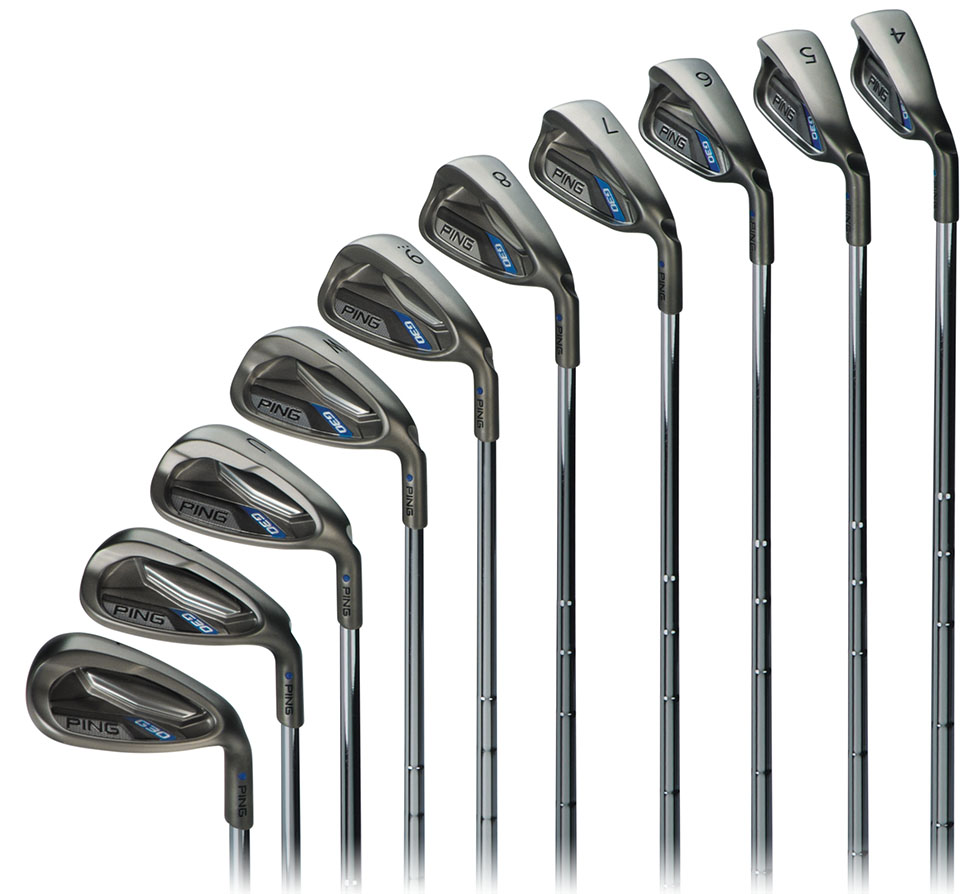 I’m not a PING guy. It’s not that I have anything against the company, but there are so many choices out in the market that I’ve just never really given them proper consideration. It may be because some other companies shove their marketing in your face all the time, or PING’s pros don’t have the star power (Bubba excluded) of some of its competitors. Either way, I have never given them a fair shake, so when the opportunity arrived for me to review a set of PING G30 irons, I jumped at it.
I’m not a PING guy. It’s not that I have anything against the company, but there are so many choices out in the market that I’ve just never really given them proper consideration. It may be because some other companies shove their marketing in your face all the time, or PING’s pros don’t have the star power (Bubba excluded) of some of its competitors. Either way, I have never given them a fair shake, so when the opportunity arrived for me to review a set of PING G30 irons, I jumped at it.
As a high handicap player, I made a switch to a set of game improvement clubs last year and I haven’t looked back since. I like to hit high iron shots that land softly on the greens. I also like to know that when I miss the center of the clubface, I’ll still be able to get the ball somewhere near the vicinity of my target. I don’t get to spend as much time on the golf course as I’d like, so it’s nice to know that my inconsistent contact won’t hurt my score too much.
Cue the G30 irons. They are the latest offering in the G line of clubs. Like its predecessors, the G30 irons are game improvement clubs. This means they are designed to promote a higher launch angle, increase distance, and maximize forgiveness; everything I’m looking for in an iron. How do they perform in my hands? Read on, to find out.
Technology and Design
The G30 irons are cast from 17-4 stainless steel and features an undercut cavity and PING’s patented custom tuning port. These two elements help to shift the club’s center of gravity low and back to facilitate a higher launch. As with the case with all cavity-backed irons, the weight is redistributed around the perimeter of the club to increase MOI, which increases forgiveness. A soft elastomer badge is inserted in the cavity to improve sound and feel.
One of the newest features of the G30 irons that differentiate them from their predecessors is that they are progressively engineered. The 4 through 7 irons have slightly longer blade lengths, which help to further increase MOI in these clubs. The lofts of the long irons are slightly stronger than their G25 counterparts, but the lofts of the short irons and wedges remain the same. The face of the long irons is slightly thinner to generate faster ball speeds.
The G30 short irons, however, are actually designed to launch the ball a little bit lower and spin more. While the long irons are designed for maximum distance and forgiveness, the short irons focus more on consistency. The face of the short irons are actually slightly thicker so that the clubs have a softer feel.
One last difference between the G30 irons and previous models has to do with the sole of the club. By rounding out the leading edge and increasing the bounce of the clubs, PING has actually made the G30 more forgiving in terms of turf contact. The new sole design will help keep the club head from digging into the ground on a slightly fat hit.
Overall, PING has incorporated some technological changes to the G30 irons, but did so with the needs of the golfer in mind.
Esthetics
PING has never been afraid to cross the boundaries with its club design, and the G30 irons are no exception.
The first thing you’ll notice is the finish. Like its predecessor, the G25, the G30 has a dark gunmetal or charcoal finish, which I like quite a bit. It is good alternative to the traditional chrome finish that is offered in most other iron sets.
The other aspect of the G30 irons that I noticed immediately is how wide the sole is. I typically find wedges from an iron set to be more like high lofted irons, but the wedges on the G30s look like real wedges (except for the cavity, which we will get into later). The leading edge is rounded out and there is a little bit of relief ground out of the back of the sole. These clubs have more bounce than your typical iron, too, which is plainly visible.
As you would expect, the cavity is pretty deep on these clubs, and a lot of that has to do with the width of the sole. You can actually feel how thin the face is by squeezing it between two fingers. There is only a minor design element within the cavity, which is the PING logo and the G30 logo, and the elastomer insert. The insert has a metallic looking finish to it, but if you tap on it, you can clearly tell it is some kind of polymer.
From address, they look exactly as you’d expect from a game improvement club. The clubhead looks big, but not bulky. The large appearance is due to the thickness of the top and the length of the blade. PING did round out the top in an attempt to reduce the thick look, but if you are the type of golfer who does not like thick toplines, it still sticks out like a sore thumb. There is also a decent amount of offset. On the G30 irons, it ranges from just noticeable on the wedges, to fairly significant on the long irons. Once again, the number (or letter) of the club is conveniently stamped on the face, just past the area where the grooves are, so you will be able to tell at address if you have the right club or not.
What does bother me slightly is that the cavity is visible from address on the longer irons (4 and 5). This is due to the width of the sole sticking out farther back. It gives the long irons more of a hybrid-iron look to it. It may end up giving me confidence, seeing the forgiveness built into the club right from address, but I’m just not used to seeing the back of an iron at address.
Overall, I like the look of the G30 irons. They showcase their performance elements right on the outside. When you look down at these clubs, you can tell they’re going to be long and forgiving. The G30 irons will never get mistaken for a player’s club, and that’s quite alright by me.
Club Specifications
Club Loft Lie Length Offset Bounce Swing Weight ---- ---- --- ------ ------ ------ ------------ 4I 21.0° 59.06° 38.88" 0.29" 5.0° D0 5I 24.0° 60.00° 38.25" 0.26" 6.0° D0 6I 27.0° 60.94° 37.63" 0.23" 7.0° D0 7I 30.5° 61.88° 37.00" 0.20" 8.0° D0 8I 35.0° 62.81° 36.50" 0.18" 9.0° D0 9I 40.0° 63.75° 36.00" 0.16" 11.0° D0 PW 45.0° 64.00° 35.50" 0.14" 12.0° D2 UW 50.0° 64.00° 35.50" 0.12" 12.0° D2 SW 54.0° 64.25° 35.25" 0.10" 13.0° D4 LW 58.0° 64.50° 35.00" 0.08" 13.0° D6
I used PING’s nFlight fitting program from their website and was fit into the blue color code irons with the aqua grips. I’ve done a few iron fittings in person before, and nobody has ever mentioned that I might need smaller than standard grips, which I found interesting. The smaller grips really do feel more comfortable in my hands.
The shaft is the stock CFS Distance steel shaft that PING offers. I received the entire set of G30 irons, from 4 iron to LW. Most stores will offer the set from 4 iron to UW for $799.99 retail, or about $100 per club with steel shafts. The clubs are slightly more expensive with graphite shafts.
The lofts on the 4 through 6 irons are actually a little bit weaker than my current clubs, while the 7 iron through the wedges have identical lofts. This made it an easy transition in my bag.
Performance
My first experience with the G30 irons was out on the range. I brought them and my current game improvement clubs for a side-by-side comparison test. They weren’t necessarily more forgiving than my other clubs, but definitely just as forgiving.
What did surprise me was their length. I saw about a 5 yard increase in carry distance through the set. While this may not seem like much, it’s important to realize that I was comparing them to similar cavity back clubs with thin, “springy” clubfaces. The company that made the clubs I owned had already touted the distance advantage of their clubs. If you factor in the fact that they are actually slightly stronger in lofts than the G30 irons, you can see why I was surprised to see an increase in distance.
True to PING’s marketing, I did launch the wedges lower than my current wedges. This makes them easier to control, which is exactly what you want from your scoring clubs. With my current clubs, I avoided taking full swing shots with my gap or sand wedges because they would fly so high. I can hit the G30 gap and sand wedges with full confidence.
After the full swing test with the wedges, I hit various pitch and chip shots. These are some of the primary functions of the wedge, after all, so if the G30 wedges are no good around the greens, I can’t play them. With the exception of the LW (because my LW has a different sole grind which makes it more versatile), these wedges performed just as well as mine. A lot of iron manufacturers create their iron set wedges too much like their irons; Ping’s wedges are actually pretty functional wedges, which is primarily due to the bounce. If you have wedges with special grinds or bounce, these may not work for you. I replaced all the wedges in my bag for the full swing benefits because I did not see any drawbacks on the short game (again, not the LW).
The low and mid irons performed just as well as my current set, with just the slight increase in distance mentioned above. What really shined for me was the 4 and 5 irons. I found them very forgiving and easy to hit. They’re almost like a hybrid-iron or driving iron. The ball comes off the face effortlessly and launched high. I didn’t feel like I had to swing harder or muscle them to get them airborne, which helps with contact. I don’t really notice the back of the club at address anymore, either. It’s still there; I just don’t pay any attention to it. I actually replaced my 4 hybrid with the G30 4 iron because I have a tendency to hook the hybrid, which I did not notice in the 4 iron.
You can work these clubs, too. I never understood the “game improvement clubs are harder to work than blades” argument. You want to hit a draw or a fade, you can with the G30 irons. If you work clubs by missing slightly towards the heel or toe, then you’re out of luck, because slight mishits aren’t going to see a lot of gear effect.
After my successful trip to the range, I took the G30 irons to TST’s Annual Erie Outing. The experience on the course was similar to that of the range—I found the clubs to be very easy to hit. I had no problem hitting it from various lies and even found it pretty easy to hit low shots when I needed to, despite its high launching characteristics. The only times where the clubs didn’t do well was when my swing fell apart, but no club can save you from a really bad swing. As an interesting note, the 6 iron can serve as a putter in a pinch, but don’t expect to flop it unless you have some pretty good technique.
I took them out for another round afterwards played some pretty good (by my standards) golf. I took a little off all my shots to focus on quality of contact and the clubs really performed well. I didn’t lose much distance (if any) on slight mishits. I hit a few shots thin and didn’t see any yardage loss at all—they ended up exactly where I had intended to hit them, just with a lower trajectory. I even had one shot on hardpan over water that launched effortlessly onto the green.
It didn’t really occur to me until the round was over that I only hit one really fat shot. Even on that shot, I only lost about 25 yards, and I had to hit the ground about an inch before the ball to hit it fat. I attribute this to the bounce profile and rounded leading edge. Just like how bounce helps to increase the margin of error on a pitch shot by allowing you to hit the ground slightly before the ball and “glide” through the shot, it does the same on a full swing shot. By designing the irons with a rounded leading edge and more bounce, PING has made it harder to dig them into the turf, which gives them an additional element of forgiveness. If you have a really steep swing or just bottom the club out too far behind the ball, you are still going to hit it fat, but after three rounds of golf, I can reasonably say that they are harder to dig into the ground than my previous irons.
Conclusion
I think PING hit an absolute homerun with these clubs. They’re loaded with performance enhancement, but manage to be a little more subdued looking than other game improvement clubs. They launch the ball high without ballooning, they’re easy to hit, and they’re long.
The more I hit them, the more I like them. They’re definitely a good option for a mid to high-handicap player, though I feel that even low-handicap players who are looking for some additional forgiveness can play the Ping G30 irons, too.
I really can’t say enough about these clubs. They’ve made me a PING guy.

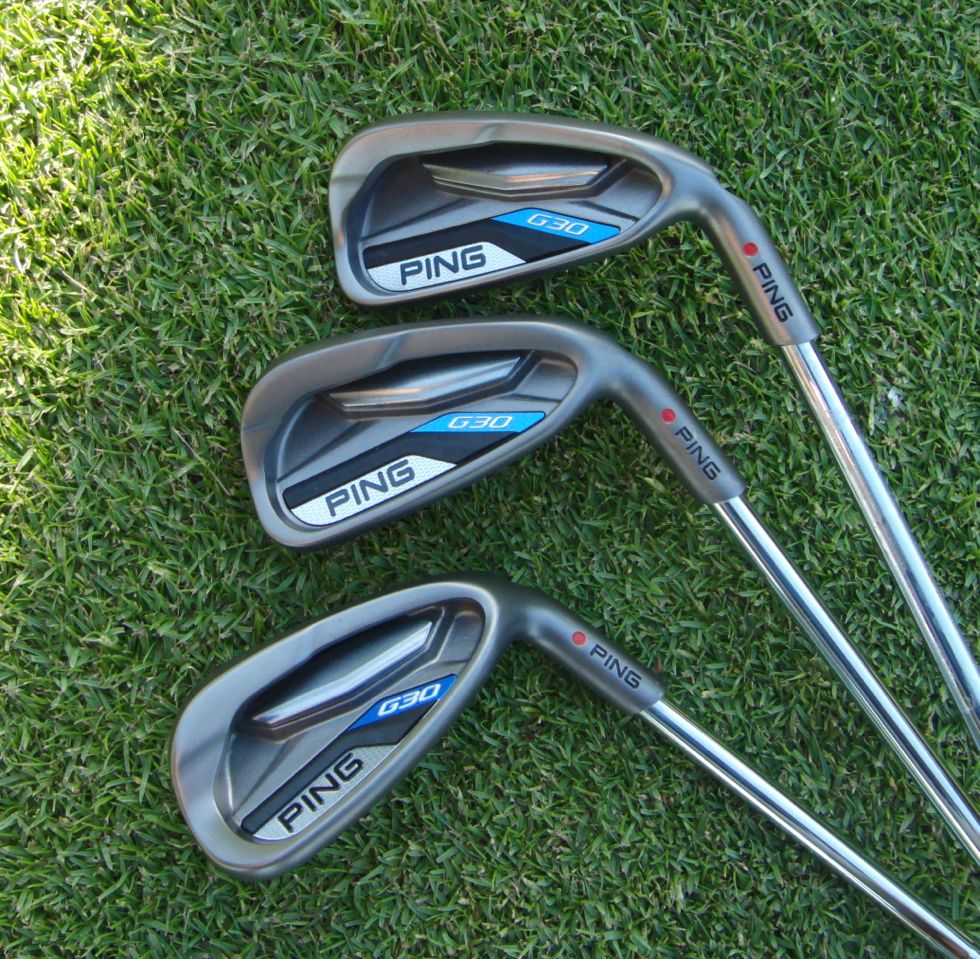
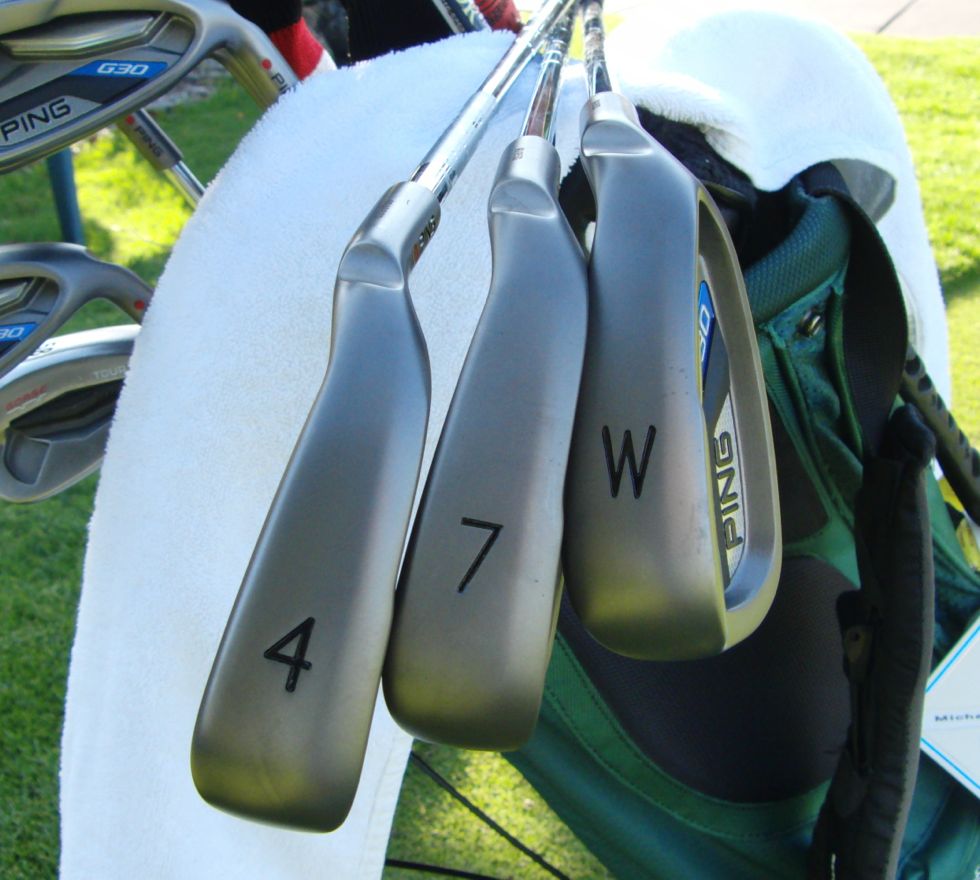


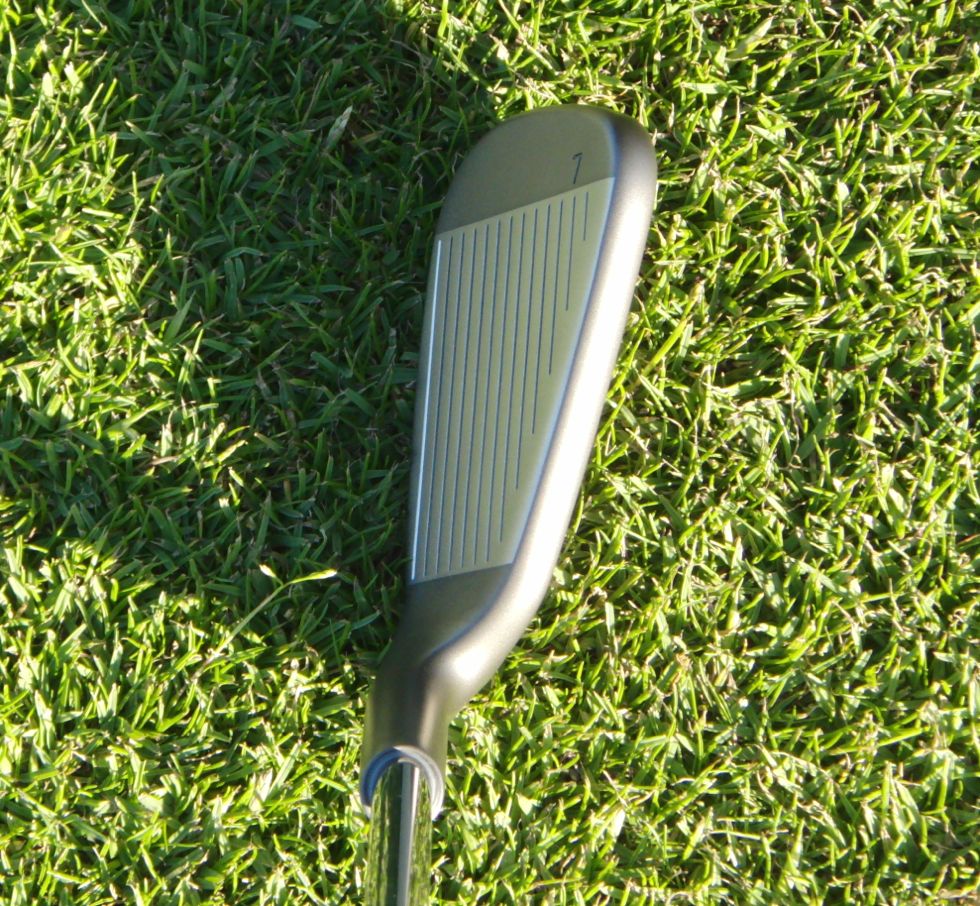
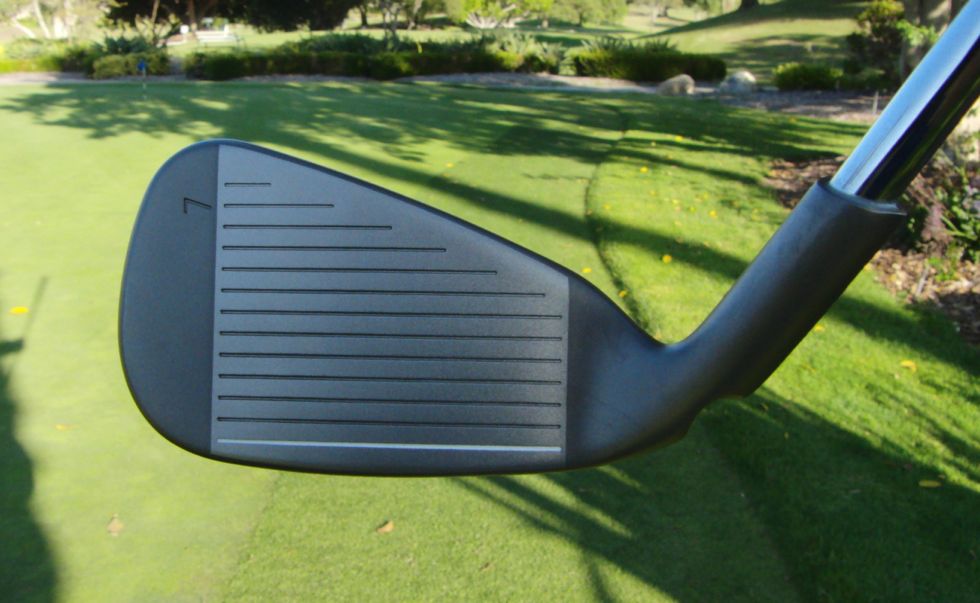
Last week, I went to a golf shop and soled 6 irons for the G25 and G30 side-by-side. Looking down at address, I couldn’t tell the two apart.
The bracing on the back of the clubhead, however, is noticeably different.
For what it’s worth, all three G30 users I’ve encountered on course really like them. (I’ve never hit the G30, but went through a partial fitting for the G25 last spring; decent club, but ended up not buying).
@WUTiger, I did the same comparison at Golf Evolution. There is a slight difference, and I mean slight. The G25 looked a bit more clunky, to me, but you’d never notice the difference if you were on the course hitting shots.
Nice review Bill!
Great review Bill! For comparison, what is the former irons that you were using as that would be useful…
Thanks for the compliments, guys.
@dennis s, my old irons are Taylormade RBZ HP irons. You’re right, I should have included them, I will do so in future reviews.
I tested out the G30’s and G25’s yesterday. I liked the G30 look more than the G25, but hit the G25 much better and had a better result on the launch monitor. I really liked the weight on it compared to the Adams tight lies I’m playing now, but eventually I went with another set that was a better fit.
Nice review though!
Nice review! “Strong Lofts”, how did i know that they are Taylormades. Getting more distance could be a result of “lofting up” (ah hem Taylormade) b/c I can get my 4i as long as my 3i. I’m more of a picker than a down and through guy. I noticed that you posted the specs, which I love, but when are the companies going to stop promising more distance without jacking the lofts. My 3i is 21* In my old titty blades the 3i is 23*.
In response to “When are they going to increase distance without jacking the loft”…The answer is PXG….Fork out $2400…Ehhhh.
I am looking for a new or used Ping G 30 Blue Dot 4 iron ser. # 11G6758 only
I am looking for a new or used Ping G 30 Blue Dot 4 iron ser. # 11G6758 only